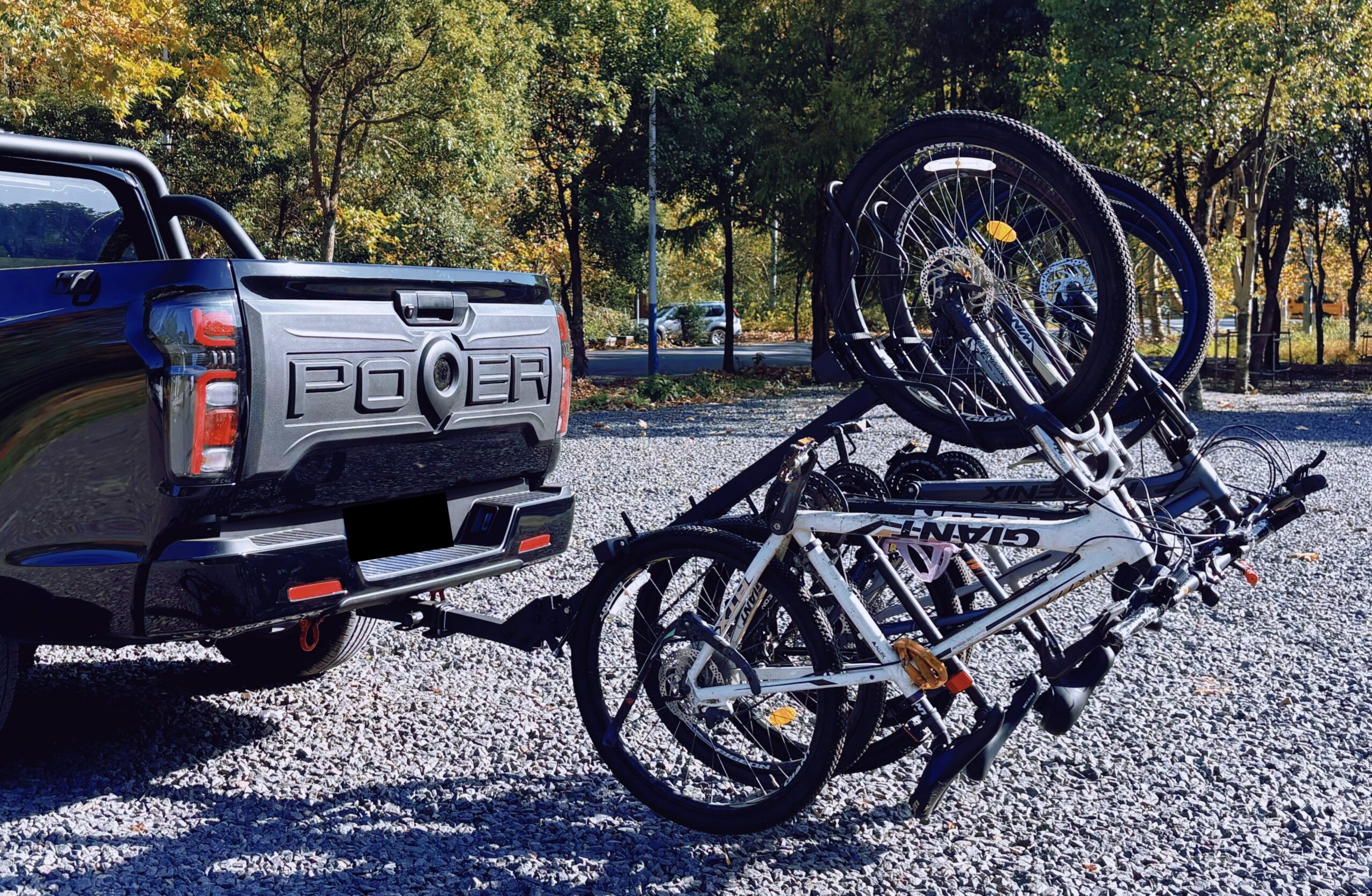The bike carrier is an essential tool for transporting your bikes, but exposure to the elements can take its toll, especially on iron components. To enhance durability and protection, the manufacturing process includes a sandblasting step before powder coating. This increases surface roughness, significantly improving the adhesion of the coating. Additionally, all installation screws are treated with Dacromet surface treatment, maximizing the product’s rust resistance. While powder coating provides a protective layer and Dacromet screws offer added protection, proper care is still crucial to prevent rust and extend the lifespan of your bike carrier. Here’s a comprehensive guide to maintaining your bike carrier and minimizing rust:
- Regular Cleaning:
Frequency: Clean your bike carrier after every use, especially if it’s been exposed to rain, snow, mud, or road salt.
Method: Use a mild soap solution (avoid harsh chemicals) and a soft brush or sponge to remove dirt, grime, and salt buildup. Pay close attention to crevices and areas where water can accumulate.
Drying: Thoroughly dry the bike carrier with a clean microfiber cloth after washing. Leaving it wet encourages rust formation.
- Inspect for Damage:
Frequency: Inspect your bike carrier regularly, ideally before and after each use.
What to Look For: Check for any scratches, chips, or cracks in the powder coating. These expose the underlying iron to moisture and accelerate rusting.
Action: If you find any damage, address it promptly. Touch up small scratches with matching touch-up paint designed for powder coating. For larger areas, consider consulting a professional for repair or re-coating.
- Lubrication:
Frequency: Lubricate moving parts, such as hinges, locks, and ratchets, every few months or as needed.
Lubricant: Use a silicone-based lubricant or a product specifically designed for bike carriers. Avoid petroleum-based lubricants as they can degrade the powder coating.
Application: Apply lubricant sparingly and wipe off any excess to prevent attracting dirt and grime.
- Proper Storage:
Location: Store your bike carrier in a cool, dry place when not in use. A garage or shed is ideal.
Position: If possible, store the bike carrier off the ground to prevent moisture absorption.
Cover: Consider using a breathable cover to protect the bike carrier from dust and moisture while allowing air circulation.
- Additional Tips:
Avoid Harsh Environments: Minimize exposure to saltwater, as it accelerates rusting. If you live near the coast, rinse your bike carrier with fresh water after each use.
Remove Bikes When Not in Use: This reduces weight and stress on the carrier, preventing potential damage to the powder coating.
Consider Rust Inhibitors: Apply a rust inhibitor specifically designed for powder-coated surfaces for added protection.
By following these simple maintenance tips, you can significantly reduce the risk of rust and keep your bike carrier in top condition for years to come. Remember, prevention is key, so regular cleaning, inspection, and proper storage are essential for maximizing the lifespan of your investment.



